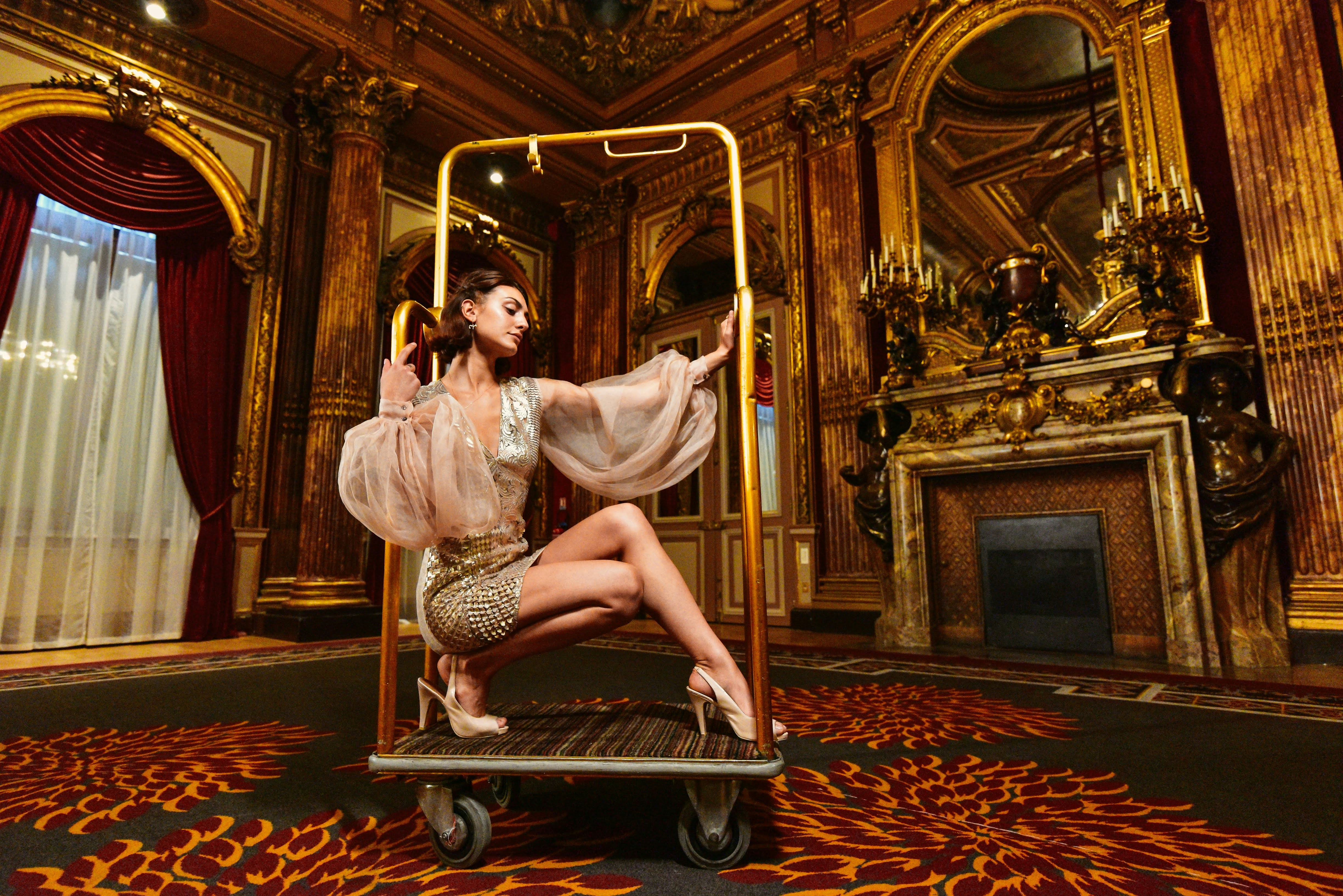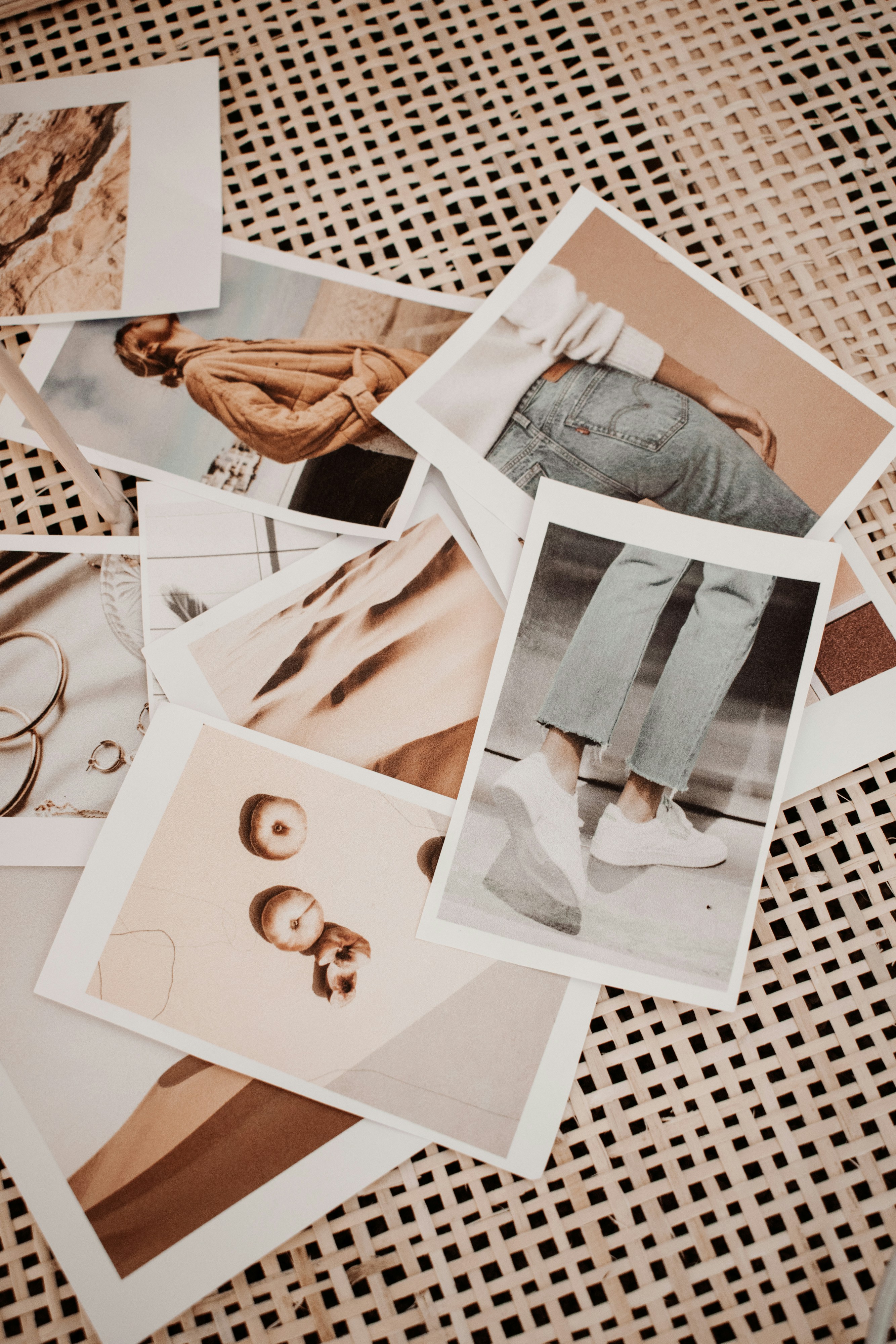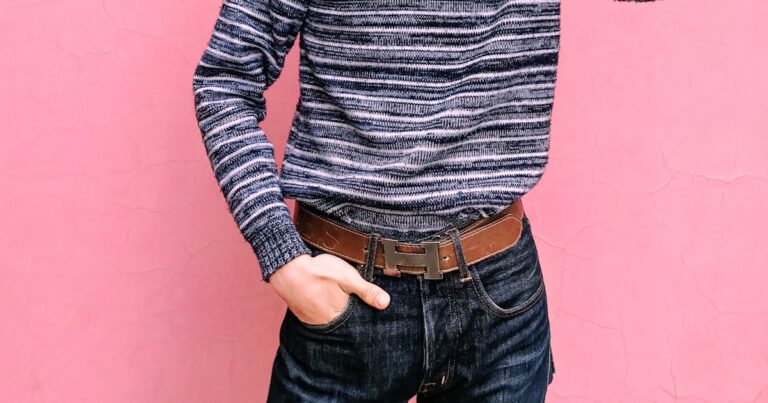Support our educational content for free when you purchase through links on our site. Learn more
🌍 The Global Top 1000 Fashion Brands You Need to Know (2025)
Ever wondered which fashion brands truly rule the world stage? From the timeless luxury houses that have defined style for decades to the fast fashion giants reshaping how we shop, the global top 1000 fashion brands form a vibrant, ever-evolving tapestry of creativity, innovation, and influence. But what exactly makes these brands stand out? And who’s poised to become the next big name in fashion?
In this deep dive, we unravel the secrets behind the biggest names like Louis Vuitton, Nike, and Zara, explore emerging disruptors shaking up the industry, and reveal how sustainability, digital transformation, and inclusivity are rewriting the rules of style. Spoiler alert: the future of fashion isn’t just about looking good—it’s about feeling good about what you wear. Ready to discover which brands are weaving tomorrow’s trends today? Keep reading!
Key Takeaways
- Luxury, sportswear, and fast fashion brands dominate the global fashion landscape, each with unique strengths in design, innovation, and market reach.
- Sustainability and ethical practices are no longer optional; they’re critical for brand longevity and consumer trust.
- Digital transformation and social media presence are game-changers, driving brand visibility and consumer engagement worldwide.
- Inclusivity and personalization are reshaping brand identities, expanding appeal across diverse demographics.
- Emerging brands that blend innovation, sustainability, and authenticity are set to join the top ranks soon.
- Explore and shop iconic brands like Louis Vuitton, Nike, and Zara to experience the pulse of global fashion firsthand.
Ready to navigate the world of fashion’s biggest players? Let’s dive in!
Table of Contents
- ⚡️ Quick Tips and Facts: Decoding the Global Fashion Powerhouses
- 🕰️ Unraveling the Fabric of Fashion: A Historical & Modern Perspective on Brand Dominance
- 📈 What Defines a “Top” Global Fashion Brand? Metrics, Influence, and the Art of Staying Relevant
- 👑 The Elite Echelon: Diving into the Top Tier of Global Fashion Powerhouses
- 1. 💎 Luxury Legends: Heritage, Craftsmanship, and Exclusivity (Think Louis Vuitton, Chanel, Hermès, Dior, Prada, Cartier, Tiffany & Co.)
- 2. 👟 Sportswear Giants: Innovation, Lifestyle, and Global Reach (The Unstoppable Force of Nike, adidas, and Jordan)
- 3. 🛍️ Fast Fashion Frontrunners: Speed, Accessibility, and Trend Dominance (Zara, H&M, and the Art of Rapid Retail)
- 4. 🌐 Emerging Disruptors & Digital Natives: The New Wave of Influence in Apparel and Accessories
- 🚀 Beyond the Runway: Key Trends Shaping the Global Fashion Landscape
- 🌱 Sustainability & Ethical Fashion: More Than Just a Trend, It’s a Mandate
- 💻 Digital Transformation & E-commerce Dominance: The Virtual Shopping Revolution
- ✨ Personalization & Experiential Retail: Crafting Unique Consumer Journeys
- 🌌 The Metaverse, NFTs, and Web3 in Fashion: Dressing for the Digital Frontier
- 🌍 Inclusivity & Diversity: Redefining Beauty Standards and Market Reach
- 💖 Consumer Insights: What Shoppers Really Want from Top Fashion Brands Today
- 🚧 Navigating the Global Fashion Market: Challenges & Opportunities for Brand Growth
- 📊 The Business of Style: Financial Health and Investment in Fashion Brands
- 🔮 How to Spot a Future Fashion Icon: Our Expert Predictions for Emerging Brands
- 🧵 Conclusion: Stitching It All Together – The Enduring Allure of Global Fashion Brands
- 🔗 Recommended Links: Your Fashion Journey Continues
- 📚 Reference Links: Our Sources of Style Wisdom
Quick Tips and Facts: Decoding the Global Fashion Powerhouses
To understand the global top 1000 fashion brands, it’s essential to first grasp the scope and complexity of the fashion industry. As brand reviewers at Popular Brands™, specializing in Discover the Most Popular Brands, we’ve delved into the world of fashion to uncover the trends, challenges, and triumphs of these powerhouse brands. For a broader perspective, let’s consider the largest brands in the US, which often set the stage for global fashion trends.
Rating the Fashion Giants
Here’s a snapshot of how some of the top fashion brands fare in terms of design, functionality, sustainability, and brand loyalty:
| Brand | Design (1-10) | Functionality (1-10) | Sustainability (1-10) | Brand Loyalty (1-10) |
|---|---|---|---|---|
| Louis Vuitton | 9 | 8 | 6 | 9 |
| Nike | 8 | 9 | 7 | 8 |
| Gucci | 9 | 8 | 5 | 9 |
| Chanel | 9 | 8 | 6 | 9 |
| Zara | 8 | 8 | 5 | 7 |
Unpacking the Ratings
- Design: This aspect looks at the brand’s ability to create visually appealing and trendy products. Brands like Louis Vuitton and Gucci excel in this area due to their iconic and luxurious designs.
- Functionality: This considers how well the products serve their purpose, including quality, comfort, and practicality. Nike stands out for its focus on performance and comfort in its athletic wear.
- Sustainability: With the growing concern for the environment, this rating reflects the brand’s efforts towards eco-friendly practices, ethical sourcing, and waste reduction. Patagonia, not listed, is a leader in this area, but among the listed brands, Nike has made significant strides.
- Brand Loyalty: This measures how well brands retain their customer base over time, indicating customer satisfaction and brand reputation. Louis Vuitton and Chanel have a strong following due to their luxury status and consistent quality.
Unraveling the Fabric of Fashion: A Historical & Modern Perspective on Brand Dominance
The fashion industry has evolved significantly over the centuries, from the couture houses of Paris to the fast fashion phenomenon of today. Understanding this history is crucial to grasping how certain brands have managed to dominate the market. For instance, the shift towards athletic clothing as everyday wear has propelled brands like Nike and adidas to the forefront. You can explore more about athletic clothing trends on our athletic clothing page.
The Rise of Fast Fashion
Fast fashion, led by brands like Zara and H&M, has revolutionized the way clothing is produced, marketed, and consumed. This model emphasizes speed, low costs, and trendy designs, making fashion more accessible but also raising concerns about sustainability and worker rights. To learn more about the impact of fast fashion, visit the World Economic Forum.
What Defines a “Top” Global Fashion Brand? Metrics, Influence, and the Art of Staying Relevant
Several factors contribute to a brand’s status as a “top” global fashion brand, including brand recognition, financial performance, innovation, and cultural impact. Brands like Apple and Amazon have shown how innovation and adaptability can lead to dominance in their respective markets, lessons that fashion brands can learn from. For example, Louis Vuitton‘s collaboration with Nike on the Air Force 1 sneakers showcased the power of brand synergy and innovation in fashion.
The Role of Social Media
Social media platforms like Instagram and YouTube have become crucial for fashion brands to showcase their products, engage with their audience, and build their brand image. Influencer marketing, in particular, has become a significant channel for reaching younger demographics. According to a study by Influencer Marketing Hub, the influencer marketing industry is projected to grow significantly, with fashion being one of the leading industries.
The Elite Echelon: Diving into the Top Tier of Global Fashion Powerhouses
This elite group includes luxury brands like Chanel, Dior, and Gucci, known for their high-end products and exclusivity. On the other end of the spectrum are fast fashion brands like Zara and H&M, which prioritize speed and affordability. Sportswear brands like Nike and adidas have also risen to prominence, blurring the lines between athletic and everyday wear. For those interested in backpacks and outdoor gear, our backpacks section offers insights into brands that combine style with functionality.
1. Luxury Legends: Heritage, Craftsmanship, and Exclusivity
Brands like Louis Vuitton, Chanel, and Hermès are synonymous with luxury and high-quality craftsmanship. Their products are often seen as status symbols, and their brand heritage plays a significant role in their appeal. For instance, Louis Vuitton‘s iconic monogram pattern is recognized worldwide, symbolizing luxury and sophistication. You can explore Louis Vuitton‘s latest collections on their official website.
2. Sportswear Giants: Innovation, Lifestyle, and Global Reach
Nike and adidas are leading the charge in sportswear, with a focus on innovation, sustainability, and lifestyle marketing. Their success has led to the blurring of lines between athletic and fashion wear, with many of their products becoming staples in everyday wardrobes. Nike‘s commitment to innovation is evident in its sustainability efforts, aiming to reduce its environmental footprint.
3. Fast Fashion Frontrunners: Speed, Accessibility, and Trend Dominance
Zara and H&M are at the forefront of fast fashion, offering the latest trends at affordable prices. Their business model, which emphasizes speed and volume, has disrupted traditional fashion cycles and made fashion more accessible to a wider audience. However, this model also raises concerns about sustainability and ethics, which brands are now addressing through various initiatives. For more on fast fashion’s impact, visit the Ellen MacArthur Foundation.
4. Emerging Disruptors & Digital Natives: The New Wave of Influence in Apparel and Accessories
New brands are emerging, leveraging digital platforms and social media to build their presence and challenge traditional fashion houses. These brands often focus on sustainability, inclusivity, and direct-to-consumer sales, appealing to a younger, more conscious consumer base. For example, Patagonia has been a leader in environmental activism, using its platform to raise awareness about critical issues.
Beyond the Runway: Key Trends Shaping the Global Fashion Landscape
The fashion industry is undergoing significant changes, driven by technological innovation, shifting consumer values, and environmental concerns. Sustainability is becoming a core focus, with brands adopting eco-friendly materials, reducing waste, and promoting recycling. According to the United Nations, the fashion industry is one of the largest polluters, making sustainability efforts crucial.
Sustainability & Ethical Fashion: More Than Just a Trend, It’s a Mandate
Consumers are increasingly demanding that fashion brands prioritize sustainability and ethics. This includes the use of eco-friendly materials, fair labor practices, and transparent supply chains. Brands like Stella McCartney and Reformation are leading the way in sustainable fashion, with Stella McCartney‘s commitment to sustainability being a prime example.
Digital Transformation & E-commerce Dominance: The Virtual Shopping Revolution
The rise of e-commerce and social media has transformed how fashion is consumed and interacted with. Brands must now have a strong digital presence to remain competitive, leveraging platforms like Instagram and TikTok for marketing and sales. For insights into the latest audio equipment for virtual events, visit our audio equipment section.
Personalization & Experiential Retail: Crafting Unique Consumer Journeys
Brands are focusing on creating personalized and immersive experiences for their customers, both online and offline. This includes customizable products, virtual try-on, and interactive store experiences. Nike‘s Nike By You platform allows customers to design their own shoes, offering a unique level of personalization.
The Metaverse, NFTs, and Web3 in Fashion: Dressing for the Digital Frontier
The fashion industry is exploring the potential of virtual fashion, NFTs (Non-Fungible Tokens), and Web3 technologies. These innovations could revolutionize fashion consumption, ownership, and expression, offering new avenues for creativity and interaction. For more on the metaverse and its implications, visit TechCrunch.
Inclusivity & Diversity: Redefining Beauty Standards and Market Reach
There’s a growing demand for inclusivity and diversity in fashion, with brands being called upon to represent a broader range of body types, ages, and ethnicities in their marketing and product lines. This shift towards inclusivity is not only a moral imperative but also a business opportunity, as it can expand a brand’s market reach and appeal. Fenty by Rihanna has been praised for its inclusivity, offering a wide range of sizes and shades.
Consumer Insights: What Shoppers Really Want from Top Fashion Brands Today
Understanding consumer preferences and values is crucial for fashion brands aiming to stay relevant. Today’s consumers are looking for sustainability, quality, inclusivity, and authenticity from the brands they support. They are also more informed than ever, using social media and review platforms to research brands and their practices. For insights into what consumers want from boats and marine equipment, visit our boats section.
The Quest for Authenticity and Transparency: Peeking Behind the Seams
Consumers want to know the story behind the brand, including its values, manufacturing processes, and social and environmental impact. Transparency is key, with brands like Patagonia and Reformation leading the way in open communication about their practices. Patagonia‘s environmental responsibility page is a model of transparency.
Value vs. Price: Decoding Consumer Spending Habits in the Apparel Industry
While price is an important factor, consumers are increasingly looking for value beyond just the cost. This includes the quality of the product, its durability, and the brand’s commitment to sustainability and social responsibility. Everlane is known for its transparent pricing, showing customers exactly how much each product costs to make.
The Power of Brand Storytelling and Community Building: More Than Just Clothes
Fashion brands are now expected to be more than just suppliers of clothing; they need to tell a story, build a community, and stand for something. This can include supporting social causes, promoting diversity, and fostering a sense of belonging among their customers. Nike‘s Just Do It campaign is a classic example of brand storytelling.
Navigating the Global Fashion Market: Challenges & Opportunities for Brand Growth
The global fashion market is complex and dynamic, presenting both challenges and opportunities for brand growth. Brands must navigate geopolitical shifts, sustainability concerns, and changing consumer behaviors while staying ahead of the competition and adapting to new technologies. For insights into bikes and cycling gear, visit our bikes section.
Supply Chain Resilience and Geopolitical Shifts: The Threads That Bind (or Break)
Fashion brands are heavily reliant on global supply chains, which can be vulnerable to geopolitical tensions, trade policies, and natural disasters. Building resilience into these supply chains is crucial for maintaining production and delivery schedules. According to the World Trade Organization, global trade can be significantly impacted by geopolitical events.
Intellectual Property & Counterfeiting Concerns: Protecting the Crown Jewels of Design
The fashion industry is plagued by counterfeiting, which not only hurts brand revenues but also undermines consumer trust and safety. Protecting intellectual property through legal means and innovative authentication technologies is a growing concern for fashion brands. Louis Vuitton has been at the forefront of combating counterfeiting, with a dedicated anti-counterfeiting program.
The Battle for Talent and Creative Innovation: Who’s Designing the Future?
Attracting and retaining creative talent is essential for fashion brands looking to stay innovative and ahead of the curve. This includes not just designers but also technologists, sustainability experts, and digital innovators who can help brands navigate the changing landscape. Fashion schools like Central Saint Martins are nurturing the next generation of fashion talent.
The Business of Style: Financial Health and Investment in Fashion Brands
The financial health of fashion brands is a critical aspect of their success, influencing their ability to invest in design, marketing, sustainability initiatives, and digital transformation. Investors are looking for brands that can demonstrate not only financial stability but also a clear vision for the future and a commitment to sustainable growth. For insights into audio equipment for fashion events, visit our audio equipment section.
How to Spot a Future Fashion Icon: Our Expert Predictions for Emerging Brands
Identifying the next big thing in fashion requires a deep understanding of consumer trends, technological advancements, and sustainability initiatives. Emerging brands that prioritize innovation, inclusivity, and environmental responsibility are likely to capture the attention of conscious consumers and investors alike. ThredUp is an example of an emerging brand focusing on sustainable fashion, offering a wide range of second-hand clothing.
Conclusion: Stitching It All Together – The Enduring Allure of Global Fashion Brands

After weaving through the intricate tapestry of the global top 1000 fashion brands, one thing is crystal clear: fashion is far more than fabric and flair—it’s a dynamic ecosystem shaped by heritage, innovation, consumer values, and global challenges. From the luxury legends like Louis Vuitton and Chanel, whose timeless craftsmanship commands loyalty, to the fast fashion frontrunners like Zara and H&M, who democratize style with lightning speed, each brand plays a unique role in this vibrant industry.
Our deep dive revealed that sustainability and digital transformation are no longer optional—they’re the threads holding the future of fashion together. Consumers crave authenticity, transparency, and inclusivity, pushing brands to evolve beyond aesthetics into meaningful storytelling and ethical practices.
So, what does this mean for you, the savvy shopper or fashion enthusiast? Whether you’re chasing the latest sneaker drop from Nike, admiring the elegance of Hermès, or exploring emerging disruptors shaking up the scene, understanding these brands’ strengths and challenges empowers you to make informed choices that align with your style and values.
Remember the question we teased earlier about spotting future fashion icons? The answer lies in brands that blend innovation, sustainability, and cultural relevance—those that listen to consumers and adapt swiftly. Keep an eye on digital natives and eco-conscious pioneers; they’re stitching the next chapter of fashion history.
In short, the global fashion landscape is as exciting as ever, and with the insights we’ve shared, you’re now equipped to navigate it like a pro. Ready to dive deeper? Let’s keep exploring!
Recommended Links: Your Fashion Journey Continues
👉 Shop the Icons & Innovators:
- Louis Vuitton Official Site
- Nike Official Store on Amazon
- Gucci Official Site
- Chanel Official Site
- Zara Official Site
- H&M Official Site
- Patagonia Official Site
- Stella McCartney Official Site
- Everlane Official Site
- Reformation Official Site
Books for the Fashion Buff:
- “The End of Fashion: How Marketing Changed the Clothing Business Forever” by Teri Agins
- “Fashionopolis: The Price of Fast Fashion and the Future of Clothes” by Dana Thomas
- “Deluxe: How Luxury Lost Its Luster” by Dana Thomas
FAQ Section

What are the most popular fashion brands in the world right now?
The most popular fashion brands currently blend heritage with innovation. Names like Louis Vuitton, Nike, Gucci, Chanel, and Zara dominate due to their global recognition, product diversity, and marketing prowess. Luxury brands maintain allure through exclusivity and craftsmanship, while sportswear and fast fashion brands capture mass markets with accessibility and trend responsiveness. Popular Brands™ reviews consistently highlight these brands for their ability to balance tradition and modern consumer demands.
Read more about “What Is the Number 1 Ranked Brand? Discover the Top 5 in 2025! 🌟”
How do fashion brands rank in terms of global recognition and sales?
Fashion brand rankings hinge on multiple metrics: brand value, global sales, market penetration, and consumer loyalty. For example, Louis Vuitton often tops luxury brand rankings due to its high brand value and consistent sales growth, as reported by Brand Finance. Meanwhile, Nike leads in sportswear sales globally, leveraging innovation and lifestyle branding. Fast fashion brands like Zara rank high in volume and global reach but face challenges in sustainability rankings.
What role does digital presence play in these rankings?
Digital engagement is a game-changer. Brands with strong e-commerce platforms and social media followings, such as Nike and Gucci, enjoy higher visibility and consumer interaction, directly impacting sales and brand equity.
Read more about “15 Top Clothing Brands in the World You Need to Know (2025) 👗”
Which emerging fashion brands are expected to join the top 1000 list in the near future?
Emerging brands focusing on sustainability, digital innovation, and inclusivity are poised to climb the ranks. Brands like Reformation, Patagonia, and digital-first labels such as ThredUp are gaining traction. Their commitment to ethical practices and direct-to-consumer models resonates with younger consumers. Additionally, digital-native brands leveraging NFTs and the metaverse, like The Fabricant, are pioneering new frontiers in fashion.
What are the key factors that determine a fashion brand’s success and ranking in the global market?
Success boils down to several critical factors:
- Brand Identity & Storytelling: Authentic narratives that connect emotionally with consumers.
- Innovation: In design, technology, and business models (e.g., customization, sustainability).
- Sustainability & Ethics: Transparent supply chains and eco-friendly practices.
- Consumer Engagement: Active social media presence and community building.
- Financial Health: Strong sales, profitability, and investment in growth.
- Adaptability: Ability to respond to market trends and geopolitical shifts.
Brands excelling in these areas, such as Nike and Louis Vuitton, consistently rank at the top.
Reference Links: Our Sources of Style Wisdom
- Louis Vuitton Official Site
- Nike Sustainability Initiatives
- Gucci Official Site
- Chanel Official Site
- Zara Official Site
- H&M Sustainability
- Patagonia Environmental Responsibility
- Brand Finance Global 500 2024
- Influencer Marketing Hub: Fashion Industry Insights
- United Nations on Fashion Industry Impact
- World Trade Organization – Trade and Geopolitics
- Ellen MacArthur Foundation – Circular Fashion
- TechCrunch on Metaverse and NFTs
- Patagonia Transparency
- Everlane Transparent Pricing
- Central Saint Martins Fashion School
- Over 1,000 Companies Have Curtailed Operations in Russia—But …




